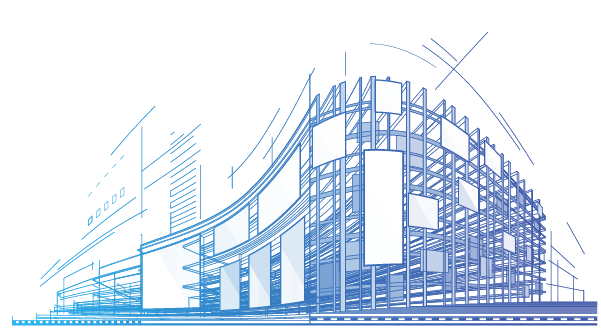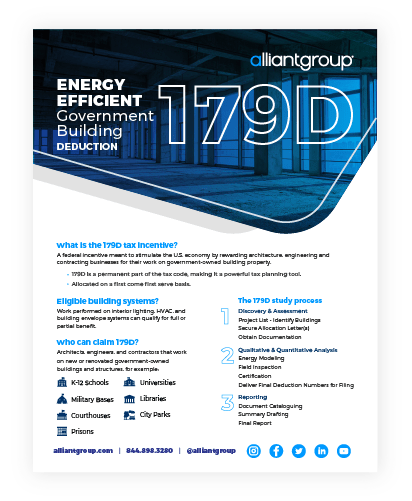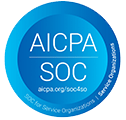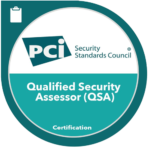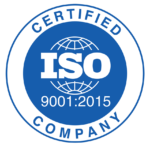Ruling Makes alliantgroup the only 179D provider with U.S. Tax Court Validated Process and Methodology
The U.S. Tax Court issued a precedent-setting opinion on IRC sec. 179D for alliantgroup’s client.
Ruling Makes alliantgroup the only 179D provider with U.S. Tax Court Validated Process and Methodology
The U.S. Tax Court issued a precedent-setting opinion on IRC sec. 179D for alliantgroup’s client.
Discover The Benefits Of The 179D Deduction
- The 179D deduction, also called the Energy Efficient Commercial Buildings Deduction, aims to incentivize businesses implementing energy-efficient technologies and practices within commercial buildings.
- Businesses working on buildings owned by government entities, non-profits, Indian tribal governments, or Alaska Native organizations can qualify.
- Eligibility for more than $5.00 per square foot in deductions is possible if the business contributed to the design of HVAC, interior lighting, or the building envelope.
NEED HELP WITH THE 179D DEDUCTION?
Schedule a free consultation
Fill out the form to receive more information
SL | 179D | Commercial Buildings
This form is created for R&D tax credit landing page.
Discover The Benefits Of The 179D Deduction
- The 179D deduction, also called the Energy Efficient Commercial Buildings Deduction, aims to incentivize businesses implementing energy-efficient technologies and practices within commercial buildings.
- Businesses working on buildings owned by government entities, non-profits, Indian tribal governments, or Alaska Native organizations can qualify.
- Eligibility for more than $5.00 per square foot in deductions is possible if the business contributed to the design of HVAC, interior lighting, or the building envelope.
NEED HELP WITH THE 179D DEDUCTION?
Schedule a free consultation
Fill out the form to receive more information
SL | 179D | Commercial Buildings
This form is created for R&D tax credit landing page.
Total Deduction:
$10 Million
Project Types Include: K-12 Schools, City Housing, Higher Education, Libraries, Police Stations
Total Deduction:
$6 Million
Project Types Include: Nursing Schools, Higher Education, K-12 Schools, Hospitals, College Dormitories
Total Deduction:
$2.8 Million
Project Types Include: Fire Stations, Police Stations, K-12 Schools
Who Can Claim 179D?
Architects, engineers, and design-build contractors that work on new or renovated government-owned buildings and structures, for example:
K-12 Schools
MILITARY BASES
Prisons
Non - Profits
Hospitals
COURTHOUSES
UNIVERSITIES
LIBRARIES
AIRPORT
CITY PARKS
Tribal Lands
The 179D Study Process
To qualify for the 179D tax deduction, one needs to follow due process. Broadly there are two parts to the 179D study process.
- Evaluation: In this part, you evaluate the building to determine if they qualify for 179D tax deduction. The building is also compared to the reference model for energy efficient qualifications under ASHRAE norms. This also involves a physical visit to the building by a licensed qualified third party in the state.
- Documentation: There are two primary documents required for 179D tax deduction. Allocation letters confirming ownership of property, energy efficiency of the building and signed by authorized personnel are required for 179D tax deduction. Secondly, a report certifying the building qualifies for 179D along with an energy model that shows energy reduction compared to ASHRAE standards.
1. Discovery & Assessment
Project List – Identify Buildings Secure Allocation Letter(s) Obtain Documentation
2. Qualitative & Quantitative Analysis
Energy Modeling, Field Inspection, Certification, and Deliver Final Deduction Numbers for Filing
3. Reporting
Document Cataloguing, Summary Drafting, and Final Report
How Can We Help? The alliantgroup Advantage
We are the leading experts in tax credits and incentives. Since 2002, we have helped US businesses grow their operations and stay ahead of the competition. To date, we have delivered billions in refunds to over 27,000 businesses.
- Risk-free, no-cost preliminary assessment
- Top-class staff of licensed engineers in every state who give utmost attention to every aspect of the whole process
- State-of-the-art cutting-edge proprietary software interface that aligns with the US Department energy modeling software used by the IRS
- Best licensed engineers in all 50 states
- A highly skilled team of energy modelers who specialize in the three qualifying building systems
- Well-established relationships with 8000+ government entities
alliantgroup has delivered over $3 billion in 179D tax deduction. Our track record is as follows:
- Nearly $13.3M deduction identified for 51 properties in architecture and engineering
- Close to $12.8M deduction for a design-build contractor in controls, HVAC, and sheet fabrication
- Total $2.6M deductions for design-build contractors in interior lighting and HVAC
WHITEPAPER DOWNLOAD
A Guide on How You Can Claim the 179D Deduction
The Consolidated Appropriations Act of 2021 made the Section 179D Energy Efficient Building Deduction permanent and gives business owners and government contractors a tax incentive for energy-efficient improvements to commercial and government buildings.
GC | 179D | Insights 179D - Energy Efficient Government Building Deduction | New
GC | 179D | Insights 179D - Energy Efficient Government Building Deduction | New
What Improvements are Eligible for this Tax Deduction?
Taxpayers who invest in constructing new buildings or improving their existing buildings are eligible for 179D deduction. These investments must be aimed at reducing energy use. The improvements eligible under ASHRAE standards include:
- Building envelope improvements
- HVAC improvements
- Interior lighting solutions
Maximize Your 179D Deduction: Check If You Qualify
We'll help you determine your eligibility, ensure everything is properly allocated, and maximize your deduction for no upfront fees. Complete the form below to estimate your refund.

Testimonials
Hear From Our Clients
What are the Benefits of the 179D Tax Deduction?
You can claim up to $5.00 per square feet of the building worked on. For example, if the qualified building is 100,000 square feet, that could mean up to a $500,000 tax deduction for the work completed.
What is the 179D Tax Deduction?
Section 179D is a deduction that allows building owners to claim up to a $5.00 per square feet for energy-efficient buildings or installing systems to that effect. To qualify, newly constructed or renovated buildings must meet or exceed some key energy reduction requirements and ASHRAE standards. Section 179D is meant to stimulate the economy by rewarding architecture, engineering, and design-build contractor businesses for their work on government-owned buildings.
NEED HELP WITH THE 179D DEDUCTION?
Fill out the form to receive more information
SL | 179D | Commercial Buildings
This form is created for R&D tax credit landing page.
WHITEPAPER DOWNLOAD
A Guide on How You Can Claim the 179D Deduction
The Consolidated Appropriations Act of 2021 made the Section 179D Energy Efficient Building Deduction permanent and gives business owners and government contractors a tax incentive for energy-efficient improvements to commercial and government buildings.
GC | 179D | Insights 179D - Energy Efficient Government Building Deduction | New
FAQ’s – Frequently Asked Questions
Now buildings owned by non-profits and tribal lands qualify for the 179D Deduction. The Inflation Reduction Act has expanded eligibility for more entities.
The tax deduction is available for 3 years from the time of filing an original return.
It depends – the deduction is based on square footage and documentation showing the activities performed on each project. Talk to an expert as soon as possible if you are unsure if your work on a project is eligible.
Ready to
get started?
alliantgroup can help determine if your construction project will qualify for the 179D deduction as well as other tax credits and incentives.
Words From Our Clients

I was impressed by the time taken to educate me about how the 179D tax deduction could directly impact our business based on our work with energy-efficient projects.

John Watson
Smith Engineering
Total Deductions:
$10 Million
Project Types Include: K-12 Schools, City Housing, Higher Education, Libraries, Police Stations
Design & Product Engineering Consulting Firm
ANNUAL REVENUE:
$33 Million
TOTAL CREDITS EARNED:
$670,000
Products & Manufacturing Processes Developer
ANNUAL REVENUE:
$13.5 Million
TOTAL CREDITS EARNED:
$310,000
Who can
Claim 179D
Architects, engineers, and contractors who work on design or installation aspects of new or renovated government-owned buildings and structures.
Owners and tenants of commercial buildings who have built or installed the improvements.
Owners of four-story or greater residential buildings who have built or installed the improvements.
K-12 Schools
MILITARY BASES
Prisons
COURTHOUSES
UNIVERSITIES
LIBRARIES
AIRPORT
CITY PARKS
How
179D Tax Deduction Works
Building owners or government contractors can take the opportunity to claim a federal tax deduction of up to $1.80 per square foot of a building’s floor area if they install property that reduces energy and power costs. These installations or design efforts need to be a part of the building’s interior lighting systems; heating, cooling, ventilation, hot water systems or building envelope. The deduction is allowed for both new construction and remodeling buildings.
To qualify, the energy and power costs of a building must be reduced by at least 50% or more in comparison to the minimum requirements of “ASHRAE” (American Society of Heating, Refrigeration, & Air-Conditioning Engineers) standard. If the 50% target saving is not met, the provision allows partial deduction of $0.60 per square foot for each of the following components:
- Building envelopes
- Heating, Ventilation, and Air Conditioning (HVAC).
- Interior lighting systems
Who can
Claim 179D
Architects, engineers, and contractors that work on new or renovated government-owned buildings and structures.
Owners and tenants of commercial buildings who have built or installed the improvements.
Owners of four-story or greater residential buildings who have built or installed the improvements.
K-12 Schools
MILITARY BASES
Prisons
COURTHOUSES
UNIVERSITIES
LIBRARIES
AIRPORT
CITY PARKS
Calculate Your 179D Deduction
Take our short quiz to estimate the amount of deduction your company may be entitled to
Our Process
The 179D Study Process
With alliantgroup, there is an easy 3-step study process:
1.
Discovery
Assessment
Project List – Identify Buildings, Secure Allocation Letter(s), Obtain Documentation
2.
Qualitative &
Quantitative Analysis
Energy Modeling, Field Inspection, Certification, and Deliver Final Deduction Numbers for Filing
3.
Effective
Reporting
Document Cataloguing,
Summary Drafting, and
Final Report
Case Studies
- Mechanical contractor renovated cooling towers on subsidized housing – $579,342 in deductions
- Architecture firm renovating and building 18 new public schools – $930,377 in deductions
- Program manager renovating 51 buildings including colleges, prisons and hospitals – $13,391,241 in deductions
Case Studies
Mechanical Contractor Renovated Cooling Towers on Subsidized Housing - $579,342 in Deductions
Architecture Firm Renovating and Building 18 New Public Schools - $930,377 in Deductions
Program Manager Renovating 51 Buildings Including Colleges, Prisons and Hospitals - $13,391,241 in Deductions
alliantgroup advantage
alliantgroup has continued to be the industry leader in 179D tax credits and incentives. Take a look at some of the key aspects that set us apart from our competition.
Risk-free, no-cost preliminary assessment.
Top class staff of licensed engineers in every state who give utmost attention to every aspect of the critical 179D tax deduction.
State of the art cutting edge proprietary software interface that aligns with the US Department energy modeling software used by the IRS.
Highly skilled team of energy modelers who specialize in the three qualifying building systems.
Well established relationships with 8000+ government entities.
Associated with AEC (Architecture, Engineering, Construction) based associations like CFMA, NECA, CICPAC, and ACEC.
FOUND
more than
$3.8 BILLION
IN 179D Tax Deduction
WORKING
WITH OVER
8,000
government entities
certified More
than
20,000
Building
Partnerships
with more than
4000
CPA Firms
Featured in:






What is
179D Tax Deductions
179D is a federal incentive intended to stimulate the U.S. economy by rewarding architecture, engineering, and contracting businesses with up to $1.80 per square foot for their work on government owned building property. Work performed on interior lighting, HVAC, or a building’s envelope system can qualify for full or partial benefit.
